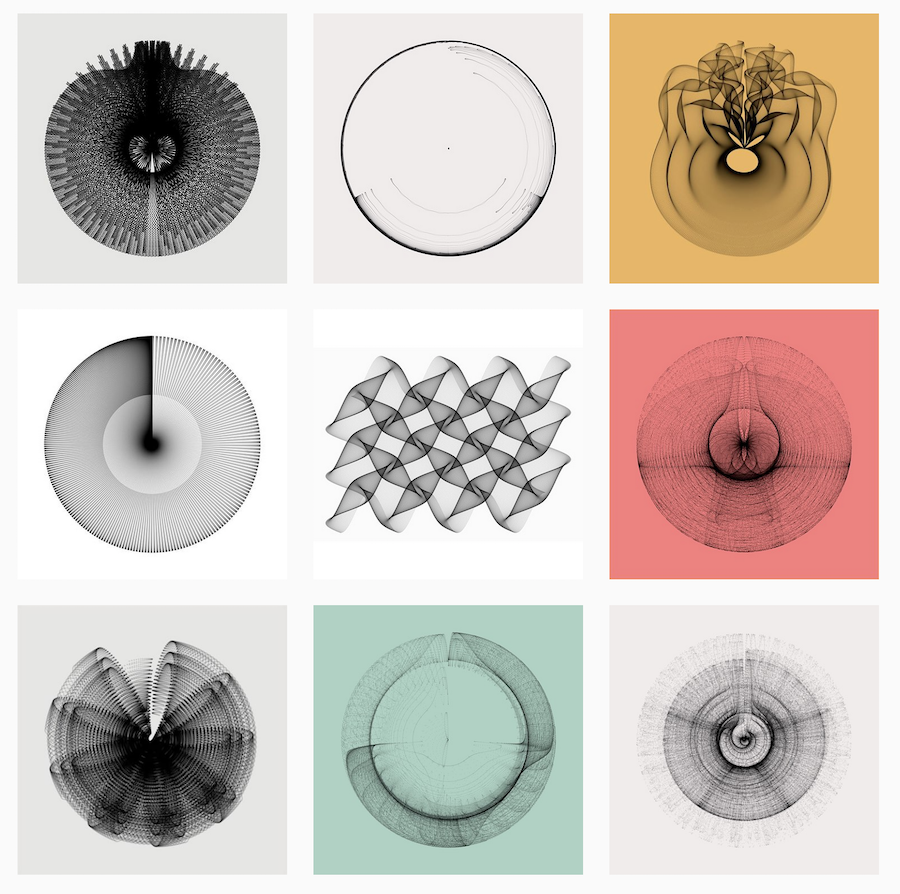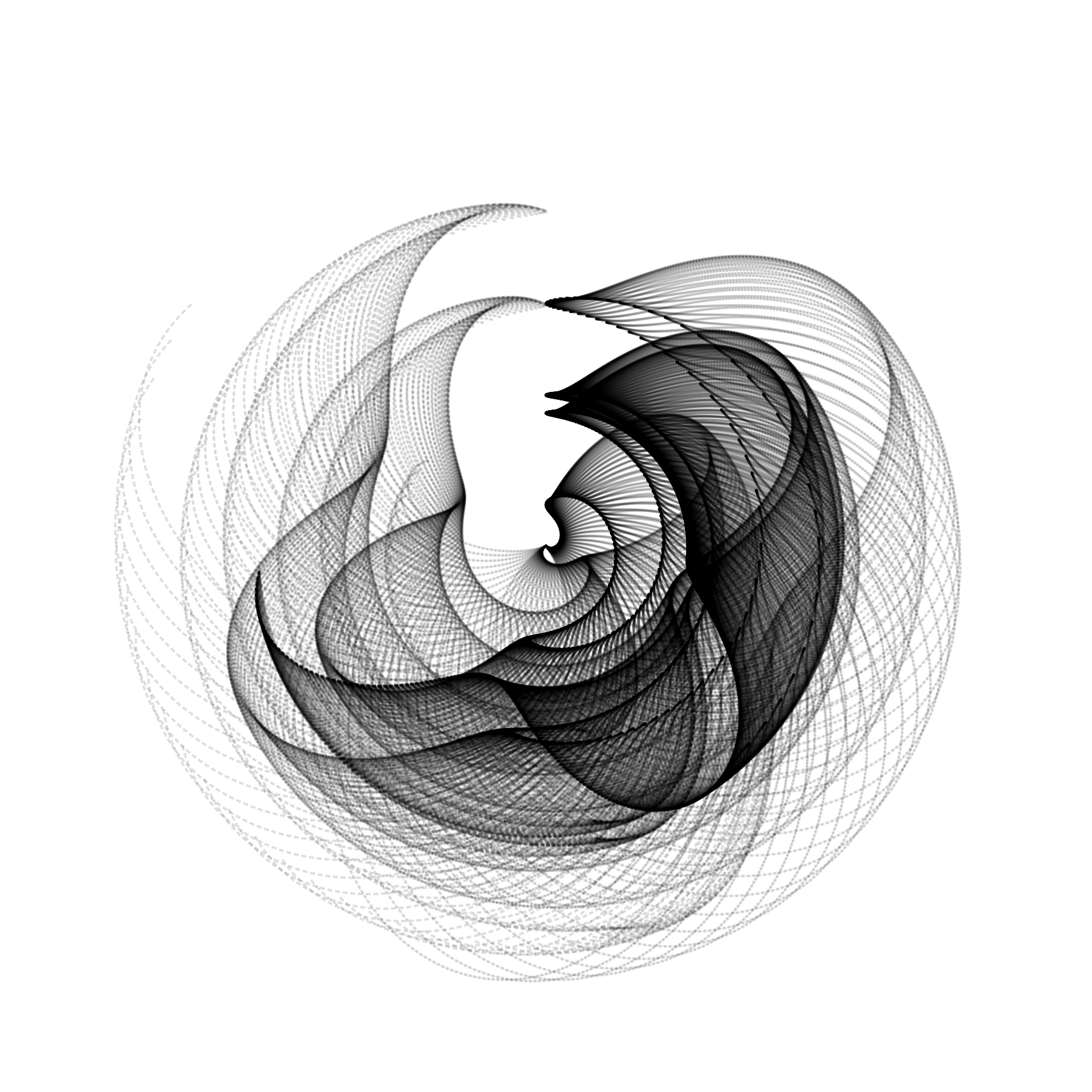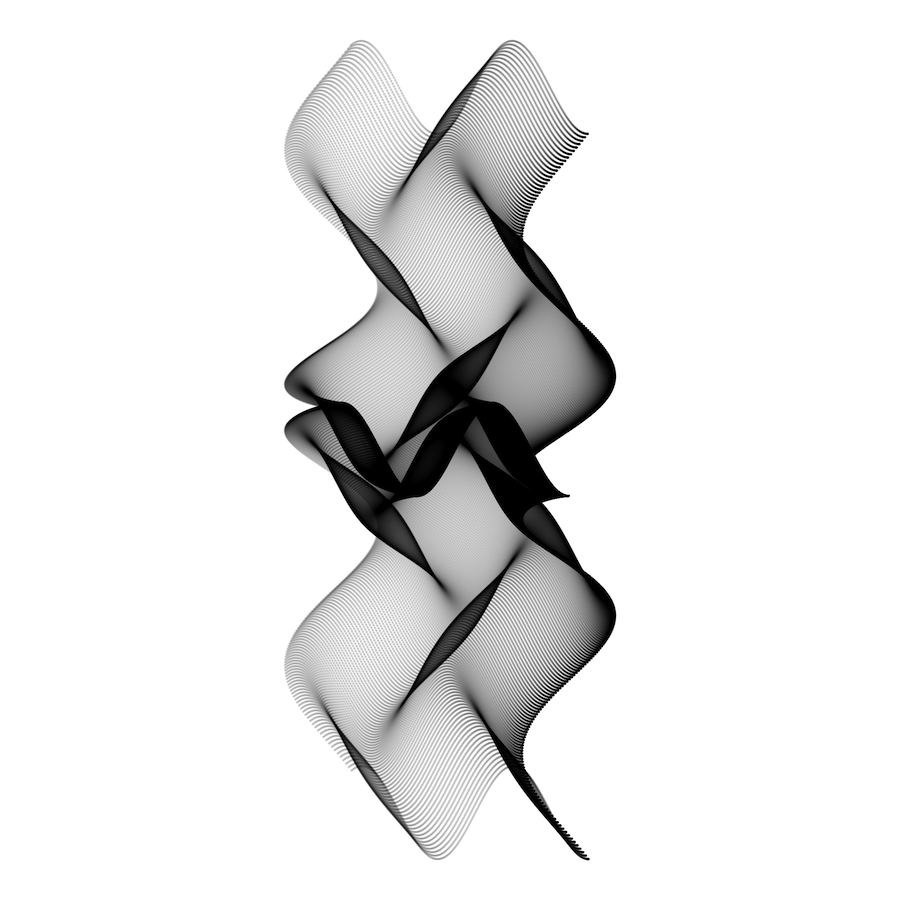Create Generative Art with R.
One overly simple but useful definition is that generative art is art programmed using a computer that intentionally introduces randomness as part of its creation process. -- Why Love Generative Art? - Artnome
The R package generativeart let's you create images based on many thousand points.
The position of every single point is calculated by a formula, which has random parameters.
Because of the random numbers, every image looks different.
In order to make an image reproducible, generative art implements a log file that saves the file_name, the seed and the formula.
You can install the package with the devtools package directly from Github:
devtools::install_github("cutterkom/generativeart")generativeart uses the packages ggplot2, magrittr, purrr and dplyr.
The package works with a specific directory structure that fits my needs best.
The first step is to create it with setup_directories().
All images are saved by default in img/everything/. I use img/handpicked/ to choose the best ones.
In logfile/ you will find a csv file that saves the file_name, the seed and the used formula.
library(generativeart)
# set the paths
IMG_DIR <- "img/"
IMG_SUBDIR <- "everything/"
IMG_SUBDIR2 <- "handpicked/"
IMG_PATH <- paste0(IMG_DIR, IMG_SUBDIR)
LOGFILE_DIR <- "logfile/"
LOGFILE <- "logfile.csv"
LOGFILE_PATH <- paste0(LOGFILE_DIR, LOGFILE)
# create the directory structure
generativeart::setup_directories(IMG_DIR, IMG_SUBDIR, IMG_SUBDIR2, LOGFILE_DIR)
# include a specific formula, for example:
my_formula <- list(
x = quote(runif(1, -1, 1) * x_i^2 - sin(y_i^2)),
y = quote(runif(1, -1, 1) * y_i^3 - cos(x_i^2))
)
# call the main function to create five images with a polar coordinate system
generativeart::generate_img(formula = my_formula, nr_of_img = 5, polar = TRUE, filetype = "png", color = "black", background_color = "white")
- You can create as many images as you want by setting
nr_of_img. - For every image a seed is drawn from a number between 1 and 10000.
- This seed determines the random numbers in the formula.
- You can choose between cartesian and polar coordinate systems by setting
polar = TRUEorpolar = FALSE - You can choose the colors with
color = 'black'andbackground_color = 'hotpink' - You can save the output image in various formats.
Default is
png, the alternatives are defined by thedeviceoptions ofggplot::ggsave(). - the formula is a
list()
It is a good idea to use the sine and cosine in the formula, since it guarantees nice shapes, especially when combined with a polar coordinate system. One simple example:
my_formula <- list(
x = quote(runif(1, -1, 1) * x_i^2 - sin(y_i^2)),
y = quote(runif(1, -1, 1) * y_i^3 - cos(x_i^2))
)
generativeart::generate_img(formula = my_formula, nr_of_img = 5, polar = TRUE, color = "black", background_color = "white")
Two possible images:
The corresponding log file looks like that:
| file_name | seed | formula_x | formula_y |
|---|---|---|---|
| 2018-11-16-17-13_seed_1821.png | 1821 | runif(1, -1, 1) * x_i^2 - sin(y_i^2) | runif(1, -1, 1) * y_i^3 - cos(x_i^2) |
| 2018-11-16-17-12_seed_5451.png | 5451 | runif(1, -1, 1) * x_i^2 - sin(y_i^2) | runif(1, -1, 1) * y_i^3 - cos(x_i^2) |
The basic concept is heavily inspired by Fronkonstin's great blog.
The main job of generative_img
-
Call generate_data(formula) and get a returned dataframe storing x-y-points-pairs evaluated in terms of the formula
-
Call geneate_plot (to create plot with ggplot2) with the dataframe obtained from step 1 passed as argument
Prerequsites:
- %>% is called the forward pipe operator
- The LHS of %>% will be put into the first argument of the RHS function
- length(seq(from = -pi, to = pi, by = 0.01)) is a vector of length 629
Code:
seq(from = -pi, to = pi, by = 0.01) %>% expand.grid(x_i = ., y_i = .)
-
expand.grid will return a (629^2 by 2) dataframe consists of rows in the form (x_i, y_i). i.e. all possible combinations of elements of the vectors passed in
seq(from = -pi, to = pi, by = 0.01) %>%
expand.grid(x_i = ., y_i = .) %>%
dplyr::mutate(!!!formula)
-
The mutate function in dplyr packages will create variables and column bind the new variable into the dataframe passed in.
-
So after the line of code executed, the dataframe becomes dimension of (629^2 by 4)
-
The (x, y) pair is added in col3 and col4 respectively, with their value evaluated by the formula provided by the user
Learn ggplot2 with R-for-data-science
Learn ggplot2 with this comprehensive guide
-
We only plot the last two columns of the dataframe returned by generate_data.R, which is (x, y).
-
Note that by default the angle is mapped to the x variable, but you can set theta = "y" to map the angle to the y variable.


